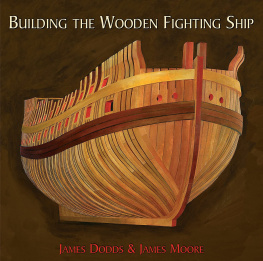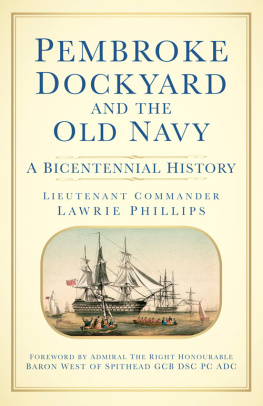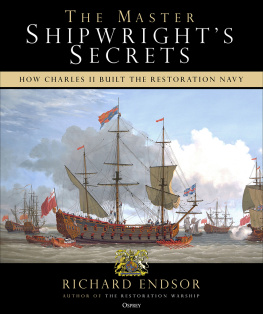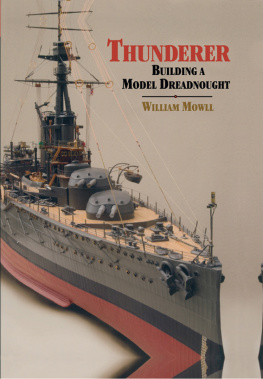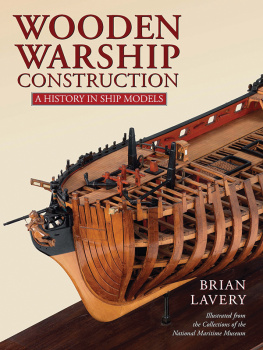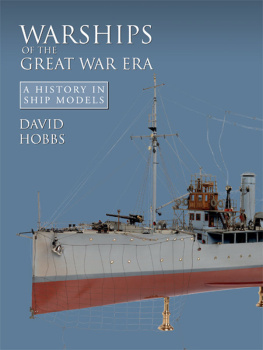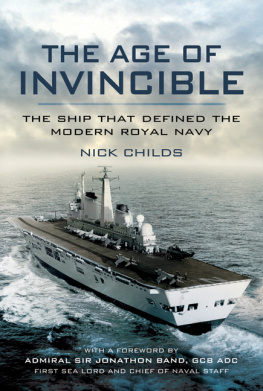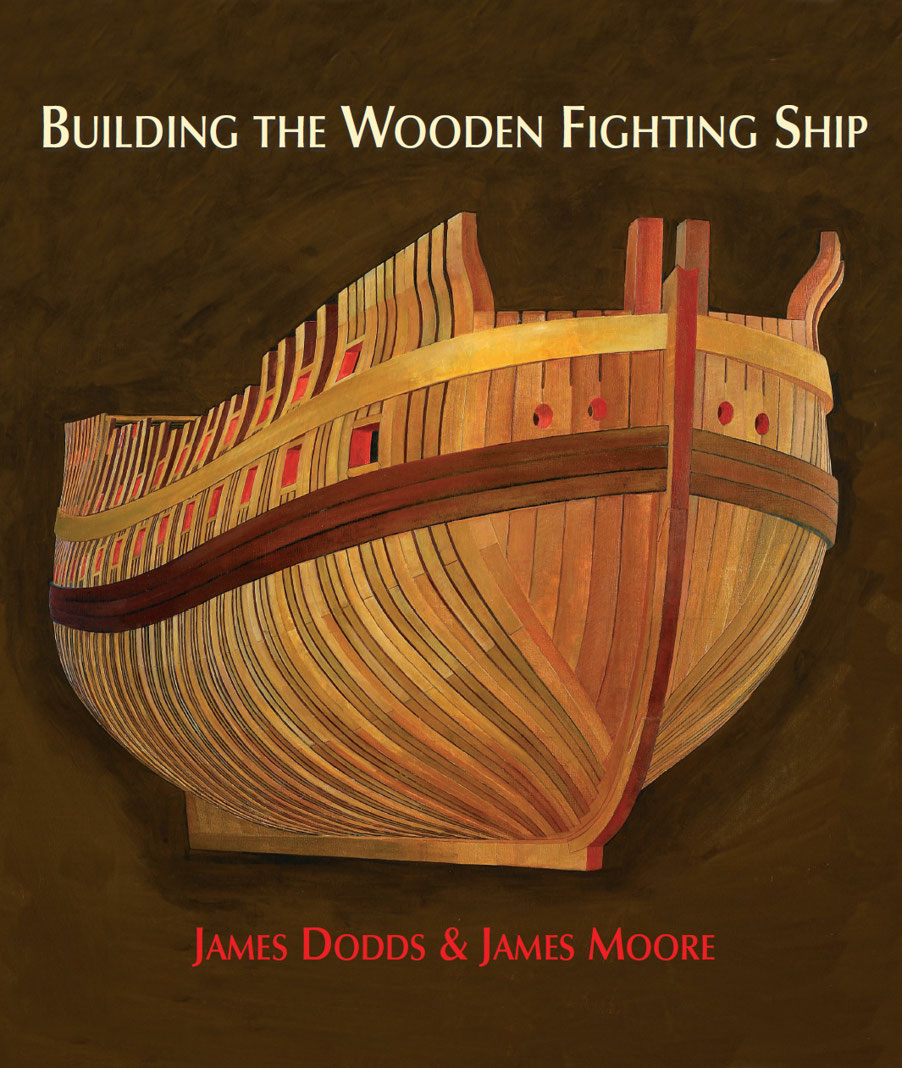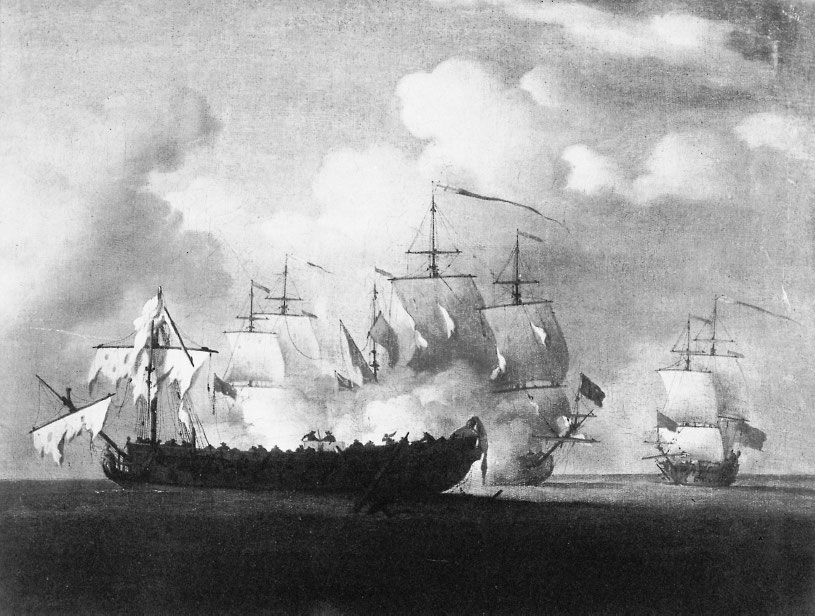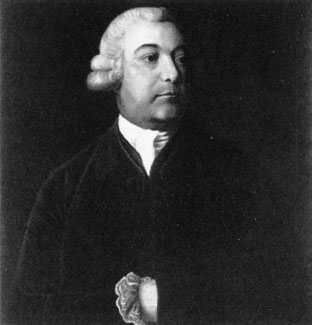Building
THE
Wooden
Fighting
Ship
James Dodds and James Moore
Illustrations by James Dodds
Greenhill
Books
Building the Wooden Fighting Ship
This edition published in 2021 by Greenhill Books, Lionel Leventhal Ltd
c/o Pen & Swords Books Limited,
47 Church Street, Barnsley, South Yorkshire, S70 2AS
www.greenhillbooks.com
Text copyright James Dodd and James Moore, 1984
Illustrations copyright James Dodd, 1984
Publishing History
Building the Wooden Fighting Ship was first published in 1984
by Hutchinson & Co (Publishers) Ltd. A new edition was
published in 2005 by Chatham Publishing, London.
British Library Cataloguing in Publication Data
A catalogue record of this book is available
From the British Library
ISBN: 978-1-78438-752-5
All rights reserved. No part of this publication may be reproduced or transmitted in any
form or by any means, electronic or mechanical, including photocopying, recording, or
any information storage and retrieval system, without prior permission in writing of
both the copyright owners and the above publisher.
Originated by MRM Graphics Ltd
Printed and bound in England by CPI Group (UK) Ltd, Croydon, CRO 4YY
Details of James Dodds prints and paintings
can be found on the artists website: www.jamesdodds.co.uk
Detail on page 127 from: The Glorious First of June, de Loutherbourg,
National Maritime Museum, London
Detail on page 113 from: David Steel, Elements of Mastmaking, Sailmaking,
Rigging, etc, 1794
Details on pages 39, 51, 57, 89 and 109 from: A Geometrical Plan and North East Elevation of
His Majestys Dock Yard at Deptford; with Part of the Town, by Thomas Milton, 1753.
National Maritime Museum, London
Details on pages 13 and 21 from: Microcosm, by W H Payne, 1824.
Frontispiece: George I surrounded by his ships, from Shipbuilding Unveiled, by William
Sutherland, 1717.
Contents
10Furniture and Armament
2 The capture of Princessa by Kent, Orford and Lenox, 1740. Oil painting by P. Monamy. National Maritime Museum, Greenwich. It was from this Spanish ship and later French prizes that the design of the English 74-gun man-of-war was evolved
1
The Origins of the 74
In April 1740 Princessa, a Spanish man-of-war, was captured, after a six-hour chase, by three English ships, Kent, Orford and Lenox, each of 70 guns. Although Princessa also carried 70 guns, she was much larger than any of her pursuers, being nearly 20 feet longer overall and 500 tons heavier. Her guns were heavier than those of the English ships, and she carried them higher above the waterline. She was a fine example of the general superiority of foreign over English ships of comparable armament and the British Admiralty decided to use her as a model for future ships. So, with the collaboration of several master shipwrights and in accordance with the Establishments of 1719, Royal George was laid down to her lines at Woolwich in 1746. Despite her 70 guns, Princessa was considered too large to be the basis of a third or second rate; Royal George was to be a first rate, with 100 guns. Subsequently, two intermediate sized ships were constructed on similar lines: Princess Amelia, with 80 guns on three decks, was laid down in 1751, and Blenheim, with 90 guns, was laid down in 1756, both at Woolwich. They were designed by Sir Thomas Slade, who became Surveyor to the Navy from 1755 to 1771. It was Slade who was to be responsible for future developments in the design of the English man-of-war.
At the time ships were rated according to the number of guns they carried, from the largest first rates with 100 guns to the smallest sixth rates with only 20 guns. A system of rates had been laid down by the Navy as early as 1650, and although the standardization was in terms of armament, there were attempts to rationalize design in the interests of economy and efficiency. It was Admiral Lord Anson, now regarded as the father of the Navy, who brought a measure of order and discipline to the British fleet that was eventually to make it supreme in Europe. He recommended that no vessel smaller than a 64-gun ship should fight in line of battle. This, he believed, was the smallest class of vessel that could fight effectively in the line.
3 Sir Thomas Slade, Surveyor to the Navy, 175571. Artist unknown. National Maritime Museum, Greenwich. The designer of Victory, Slade was responsible for the development of the English 74
The classification of rates established by Anson in 1754, and modified in 1792, is as follows:
| Rate | 1754 | 1792 |
| First | 100 guns | 100 guns and over |
| Second | 90 guns | 9098 guns |
| Third | 7080 guns | 6480 guns |
| Fourth | 5060 guns | 5060 guns |
| Fifth | 40 guns | 32 guns |
| Sixth | 20 guns | 2030 guns |
There was very little difference in the length of English first, second and third rates. The largest vessels had virtually reached the maximum length in relation to weight and strength that could be achieved in timber construction. By the beginning of the seventeenth century, in fact, shipwrights had built the largest ships possible with all-wood construction, and from then until the early years of the nineteenth century the industry seems almost to have stood still. Improvements were made, but it was the details of the design that changed rather than the size or method of construction. It was not until the end of the eighteenth century that the more extensive use of iron fastenings, knees and later cross-bracing enabled the length of vessels to be increased. These developments meant that less weight of timber could be used, thus giving a lighter construction, yet at the same time strengthening the hull.
In first and second rates the guns were carried on three decks; third and fourth rates had two gun-carrying decks; and fifth and sixth rates only one. In the case of two- and three-deckers, what was called the gun deck proper was the lower, or lowest, of the gun-carrying decks, and was just above the waterline. This was where the heaviest guns were carried, the main armament. The largest guns used by the Navy at this time were 42-pounders, the figure referring to the weight of shot fired by the breech-loading cannons. A third rate, for example, would have twenty-eight 32-pounders, each weighing 55 cwt. Thus the gun deck had to be immensely strong both to support the armament and to withstand the shock of recoil when a broadside was fired, all the guns on one side of the vessel being discharged virtually simultaneously. First and second rates were higher, beamier and generally bluffer in the bows than third rates to provide the additional displacement required to compensate for the third deck. With only two decks, third rates had a lower centre of gravity and were, on the whole, lighter in construction, thus making them faster and easier to handle. They gave a good balance between fast hull shape and number of guns.

